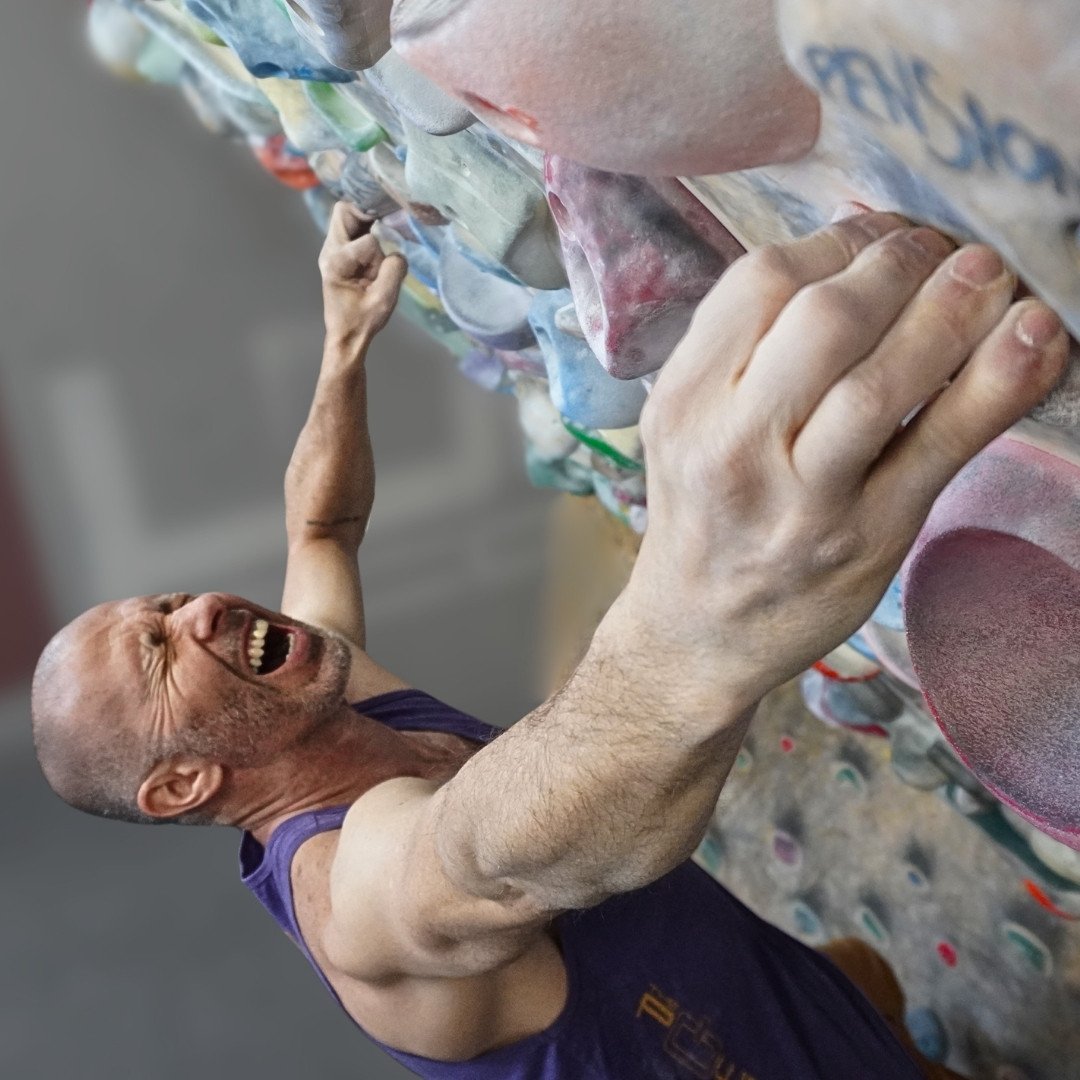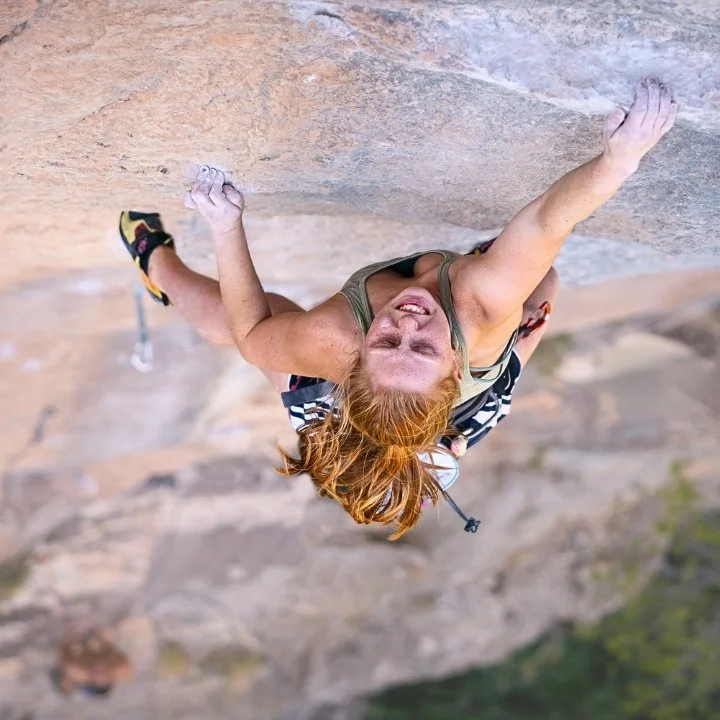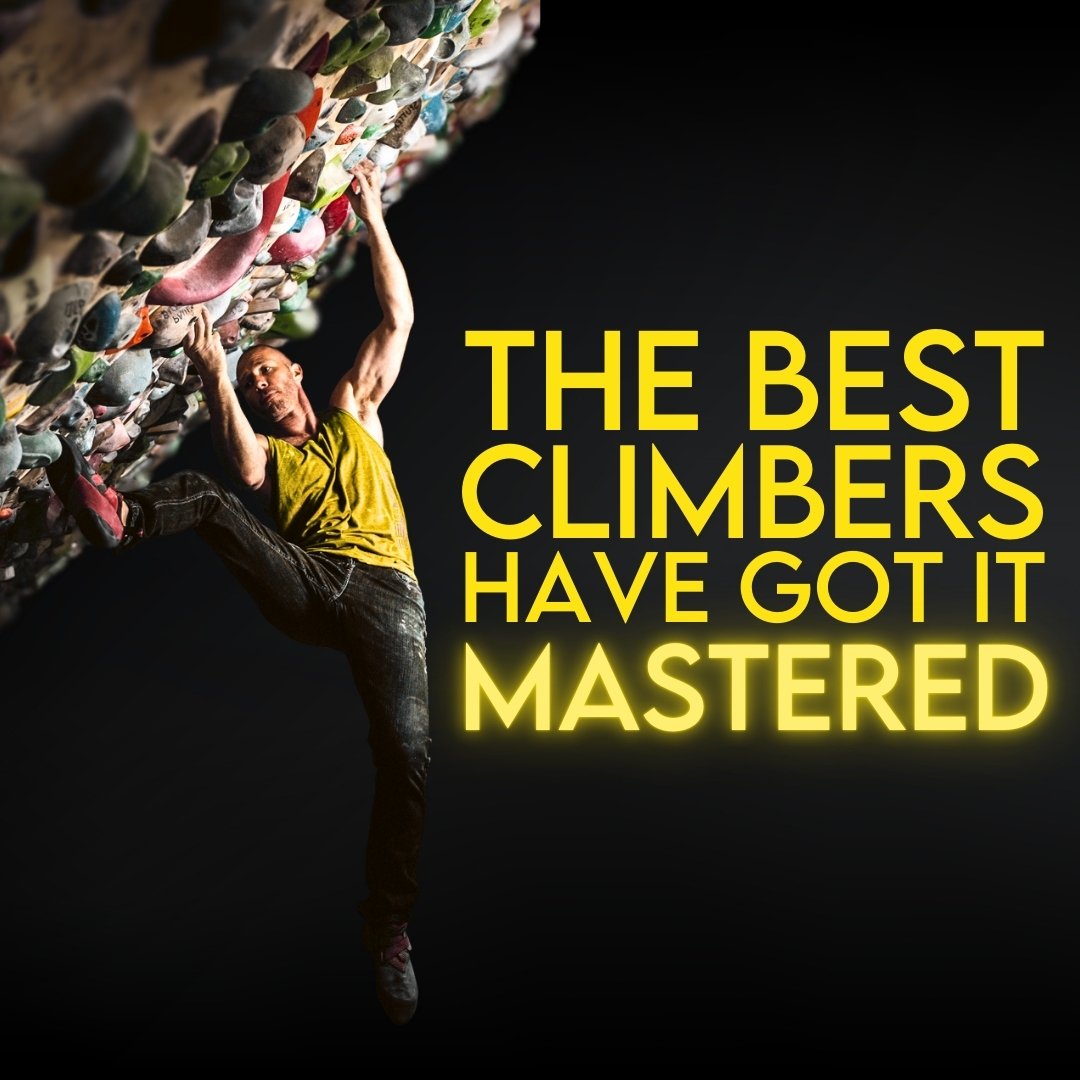Triple Your Sends With If-Then Intentions
Many years ago I was climbing at The Motherlode in the Red River Gorge with a friend. He wanted to get on a classic 13a called Snooker, and that day, the lineup was three or four people deep. He walks over and pleads with the people in line to allow him to jump in front. He says he’s likely going to redpoint and has to leave soon, and even though he lives two and a half hours away, he is laying it on thick. They let him cut in front of the line.
He gets on, solidly climbs through the crux, and arrives at the jug rest just below a little roof and a bit of a redpoint crux.
And then he says, “Take!”
WHAT?!?
First off, you can’t take at a rest on a redpoint attempt.
Second, you can’t cut in line and then take.
You just don’t do that.
But he did.
And it’s because he was missing the one simple thing that can result in the biggest performance gains in your climbing, no matter what level you’re at. And you can implement it right now. If you’re watching this at the gym between burns – then, literally, right now.
The best climbers already do this, and in my experience, it’s one of the things that separates them. Because I’d bet that 90% or more of the rest of us just don’t do this. I’m going to tell you not only what this simple superpower is, but I’m going to tell you what the sports research says about how you can give it an even greater boost.
Let’s get into it.
Let’s be honest for a minute. Think about how many times have you tied in below a route or chalked up sitting at the start of a boulder and thought – or even said out loud – something like, “Let’s just see what happens.” A lot of you say that. I’ve heard it. I’ve said it myself.
And maybe that’s marginally better than something like, “Oh man, this is going to be hard,” or “I just don’t think I have enough left,” or “Oh well, there’s always another day.” But only marginally better. And I’ve said these things, too. So have you.
Or you might think that some sort of positive self-talk or affirmation like, “I’m going to give it all I’ve got,” or “I’ve got this,” or “Let’s just do it this time,” is the best way to go about it. And that’s certainly a step in the right direction, but it’s still not quite there.
We’ve talked a lot about the things you can do to improve your movement, your strength, your tactics, and even your response to failure. And we’ll continue to talk about those things because it’s all important and we all want to get better.
But when it comes to performance, there is one simple change you can make that might very well produce the biggest gains in your climbing in terms of how many hard things you actually get done. And you can apply that simple change right now, whether that’s to your 5.11 project or your V15 project. And if it’s something you’re not already doing, then I guarantee it will be more effective for your climbing performance than any amount of fingerboarding you can do this year.
And yes, you can say these things to yourself or to your partner before you pull on and then send. Occasionally, “just seeing what happens” or “trying your best” results in doing a climb that’s hard for you. But I guarantee you that:
The person who pulls on every single go with a specific intention is getting more done.
So, it’s simple, right? Just set an intention and pull on.
Well, not exactly. “Let’s see what happens,” and “I’m just going to do my best,” are, essentially, intentions.
We can do a lot better than that.
I’ve been reading a lot of the research around goals and intentions because I’m in the midst of a deep dive on how we can set better goals. And I recently came across a term:
implementation intention (or if-then intention)
Put simply, you add a sort of checkpoint and effect to your intention:
“If I get to that jug rest, then I’m going to try to send.”
And that’s pretty good. It gives you a sort of on-route cue to reinforce your intention: to keep going to the top. But we can still do better. Sending is the outcome, and we want to stay in the process for longer. The outcome is absolutely important, but you can’t skip steps and still get there, so let’s stay in these steps for now. It might be better to say:
“If I get to that jug rest, then I’m going to try my hardest.”
This gives you the on-route trigger, but also gives you something to control afterward: your effort level. Now you can stay in the process for longer. However, the research indicates that the more specific the if-then intention, the better, usually. So:
“If I get to that jug rest, then I’m going to try my hardest to climb well and stay on the wall.”
…is probably even better. Now you have the on-route trigger and a directive for afterward. But we can take it one step further.
If we start by asking what exactly it is that might cause us to need those cues in that moment, then we’ll know how to better construct the intention.
For instance, if my friend had left the ground saying, “If I get to that jug rest, no matter how pumped I am, then I’m going to try my hardest to climb well and stay on the wall,” he’d have had a much better chance of success. The fatigue at that rest stance wouldn’t have gotten to him the way that it did because he was already anticipating the fight he might have. He wasn’t focusing on it – he didn’t say, “Oh man, this is going to be a major fight, but…” Instead, he was focused on getting to that rest. Once there, he could have checked in, recognized the fatigue, and had his answer at the ready.
Research also shows that physical fatigue greatly reduces our cognitive abilities, so we don’t want to spend time and energy up there reasoning with ourselves and doing the mental gymnastics it might require to not just take. Instead, have your response ready to go. “I’m going to try my hardest to climb well and stay on the wall.”
This can be applied to the hardest single moves on the shortest boulders as well. Let’s say it’s a hard boulder with a low percentage, really precise, two-move sequence. We might be tempted to say, “I’m just going to try hard,” or the time and battle tested “Grip it and rip it,” which, again, might work.
But if you apply the same rules:
Stay focused on the process while on the way to the outcome.
Recognize the limiting factor and anticipate it.
Give yourself a trigger moment and then a controllable action.
…then maybe it’s more like:
“If I hit that first hold, no matter how poorly I have it, then I’m just going to put all of my effort into making it work.”
Now, the usual “Oh, I just didn’t have it right,” has been cut off at the pass. Most of the time, you’re giving yourself a much greater chance. I know… you think you have to have everything perfect to do this really hard thing. But how many times have things gone wrong and you’ve still done the thing you thought needed to be perfect? If you’ve been climbing for awhile, then I bet it’s a lot of times.
We usually have more margin than we think.
Now, I want to address a question that I know is going to come up. You’re thinking it would be better to say something even more specific like, “If I hit that first hold, no matter how poorly I have it, then I’m going to tighten my core, pull my elbow down, push hard off of my right toe, stare down the big span and latch it.”
Well, the answer is no, probably not.
Research shows that if-then intentions generally result in positive change (or no change) to the outcome except when you try to control the motor sequences.
Then it often results in a negative change in outcome – at least at first. This often eventually levels back out and can move into the positive, suggesting that it can be effective as a learning tool, but not so much as a performance tool.
The research has also shown that athletes who use an effective if-then intention often perceive the difficulty of what they’re doing differently.
For golfers, the hole appears to be bigger. For basketball players, the hoop grows. For climbers, it’s not unreasonable to think the holds will feel bigger and easier to use, or the chains will seem closer than they actually are.
And like I said, there’s not really a downside, and it’s ridiculously easy to add into your process.
Every time you pull on, have an intention.
When it’s moved past learning and into performance, use an if-then intention on every single attempt.
It’s likely that means you’ll have fewer attempts before you send.
And if you get stopped regularly by hard moves and never even get into sending position, then watch this video next.
EXPLORE FURTHER
You might enjoy these related articles, episodes, and other resources:
The Atomic Elements of Climbing Movement
The Projecting Strategy Most Climbers Never Learn
Climb Your Project Sooner | The Art of Execution
SUPPORT + CONNECT
Help us keep the show sponsor-free when you join our Patreon Community for as little as $3.
Get two or more bonus episodes every month on Patreon, Spotify, or Apple.
Subscribe to THE CURRENT and get a monthly exploration of how we can all become better climbers.





















A better way to view grades and progression?